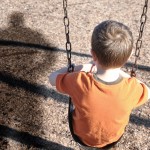
Mental health problems such as depression and anxiety are significant contributors to burden of disease, the loss of quality of life and major societal and economic costs. The prevalence of mental health disorders in the European Union is 27% of the adult population, which is estimated at 83 million people (WHO, 2015).
Psychotropic drugs (i.e. medicines that alter chemical levels in the brain which impact mood and behavior) are often the first line of defence for mental health problems in developed countries. In Finland, psychotropic drugs are the largest drug group in terms of sales, with most recent figures demonstrating 8% of the total population receiving antidepressants at some point.
Relationships between childhood adversities and adult mental disorders are widely reported throughout the literature (see Chapman et al, 2004; Chen et al 2010; and also our own elf blogs Shepherd, 2014). However, these studies tend to only focus on single circumstances of adversity. Furthermore, population based research examining the use of psychotropic drugs as an indicator of poor mental health in adulthood is potentially important, but this research is lacking.
Therefore, a recent study published in the Journal of Epidemiology and Community Health (Koskenvuo et al, 2014) set out to examine whether multiple adverse experiences in childhood, such as familial conflicts or poor parent-child relationships, predict the use of psychotropic drugs in adulthood.

Commonly prescribed psychotropic drugs include antidepressants, antipsychotics, mood stabilisers, anxiolytics, sedatives and hypnotics.
Methods
The data was derived from the Health and Social Support follow up study on a randomly selected sample of the Finish population. The initial survey was carried out via a postal questionnaire in 1992, and a follow up in 2003/4 to all those who responded to the initial questionnaire. Individual data was linked to national registers (N = 24,284).
Childhood adversities were coded by asking whether the respondents had experienced any of the following during childhood;
- Divorce or separation of parents
- Long-term financial difficulties
- Serious familial conflicts
- Fear of a family member
- Severe illness of a family member or an alcohol problem
- Parent-child relationships were also assessed
The use of psychotropic drugs was taken from Finland’s National Drug Prescription Register, which holds data on outpatient purchases of all psychotropic drugs prescribed by healthcare professionals.

The cohort study used a randomly selected sample (24,284) of the Finnish population between the ages of 20 and 54.
Results
- Use of any psychotropic drugs was found for 24.3% (N = 5,896) of the participants
- The most commonly prescribed drugs were:
- Antidepressants (17.6%)
- The least commonly prescribed drugs were:
- Drugs for bipolar disorder (2.4%)
- Antipsychotics (3.6 %)
- Frequent fear of a family member demonstrated the strongest association with psychotropic drug use:
- A 3-fold increase was found for multiple antidepressant exposure (OR = 3.08, 95% CIs 2.72 to 3.94)
- There was a 2-fold increase in multiple exposure to:
- Anxiolytics (OR = 2.69, 95% CIs 2.27 to 3.20)
- Drugs for bipolar disorder (OR = 2.09, 95% CIs 1.49 to 2.95)
- Antipsychotics (OR = 2.28, 95% CIs 1.72 to 3.02)
- Hypnotics/sedatives (OR = 2.45, 95% CIs 2.06 to 2.93)
- Serious familial conflicts were also associated with 2-fold increases in:
- Drugs for bipolar disorder (OR = 2.07, 95% CIs 1.54 to 2.77)
- Antidepressants (OR = 2.10, 95% CIs 1.87 to 2.35)
- Divorce of parents demonstrated the weakest relationship with psychotropic drugs
- A graded association was found between childhood adversities and psychotropic drug use. As number of childhood adversities increased, number of purchases of each drug also increased:
- For example, 1-2 childhood adversities was associated with an increase in 1-2 purchases of antipsychotics (OR = 1.97, 95% CIs 1.46 to 2.67)
- Whereas 5-6 childhood adversities was associated with a larger increase in >16 purchases of antipsychotics (OR = 5.63, 95% CIs 3.52 to 9.00)
- The authors also examined the effects of multiple childhood adversities and found a significant effect on any psychiatric drug use, with the association remaining after adjustments for alcohol and smoking use, BMI work status and recent life events (OR = 2.82 95% CIs 2.42 to 3.28)

The number of psychotropic drugs used as an adult corresponded to the number of adversities experienced as a child.
Conclusions
The results of this population-based cohort study demonstrate a significant effect of multiple childhood adversity measures on future mental health problems, as measured by psychotropic drug use. The strongest association was found between frequent fear of a family member and antidepressant use.
Limitations of the study include no information about medications taken during periods of inpatient hospital care. Furthermore, there was significant overlap between diagnostic drugs, suggesting drugs may not be diagnostic specific.
In conclusion, many symptoms of mental health problems which appear in early adulthood or in later life are traceable to early circumstances. The results here emphasise the importance of early recognition of families at risk.

This research underlines the importance of identifying and supporting families at risk of adversity.
Links
Koskenvuo, K., Koskenvuo, M., (2014). Childhood adversities predict strongly the use of psychotropic drugs in adulthood: a population-based cohort study of 24 284 Finns. Journal of Epidemiology and Community Health doi:10.1136/jech-2014-204732
WHO (2015). Prevalence of mood disorders – data and statistics. WHO website, last accessed 30 Jan 2015.
Chapman, DP., Whitfield, CL. Felitti, VJ., Dube, SR., Edwards, VJ., Anda, RF. (2004). Adverse childhood experiences and the risk of depressive disorders in adulthood. Journal of Affective Disorders, 82, 217-25.
Chen, LP., Murad, MH., (…) Zirakzadeh, A. (2010). Sexual abuse and lifetime diagnosis of psychiatric disorders: systematic review and meta-analysis. Mayo Clinical Proceedings, 85, 618-29.
Shepherd, A. (2014). Childhood abuse and adverse life events interact synergistically to produce a high risk for psychotic experiences. The Mental Elf, 15 Jul 2014.


RT @Mental_Elf: Childhood adversity linked to psychotropic drug use in later life http://t.co/wVhjq2y8Li
Childhood adversity linked to psychotropic drug use in later life: Andrew Jones summarises a large Finnish pop… http://t.co/Qmmqqstgg5
Susanne Hart liked this on Facebook.
Nicola Davies liked this on Facebook.
Today @ajj_1988 on how childhood adversity can predict use of antidepressants & other psychotropic drugs as an adult http://t.co/n7hYLLhwCT
The Mental Elf liked this on Facebook.
Carina Kirby liked this on Facebook.
I have been elf-blogging again! #Childhood adversity and link with #psychotropic drugs in later life http://t.co/t5DzBWRSEl @Mental_Elf
@ajj_1988 @Mental_Elf Really interesting stuff – great blog!
@LizCBraithwaite @Mental_Elf thank you :)
Childhood adversity linked to psychotropic drug use in later life
http://t.co/WAKdY0v1kp via @Mental_Elf
Rosemary Callahan liked this on Facebook.
RT @Mental_Elf: Study finds number of psychotropic drugs used as an adult corresponds to number of adversities experienced as a child http:…
well. i have to agree with whats said although i match every single one of the criteria and i suffer from PTSD, however i cannot take any kind of psychotropic as it greatly worsens my anxiety/ depression to the point i feel suicidal. the drugs are not necessary! its the lack of services available to those with mental health problems that is the issue. if doctors and care givers are readily available to those in need i am certain that these psychotropics would not be needed as much (i am not advocating the abolition as they have there uses) especially with curable symptoms (anxiety/ depression) it is the feeling of helplessness and inadequacy that is the issue. and i believe that humans are the best cure not drugs.
Interesting article http://t.co/NMzPAR1g6T
Childhood adversity linked to psychotropic drug use in later life http://t.co/YwbGEvgqUl via @Mental_Elf
The worse people’s early lives, the more drugs we give them as adults. Unsurprising but not reassuring. @Mental_Elf: http://t.co/zIj1a4lYph
@ClinpsychLucy @Mental_Elf Did someone really have to research that? Who funded it?
@redfoxcountry @ClinpsychLucy @Mental_Elf Agree, some research unbelievable!
.@sandycann2 @redfoxcountry @Mental_Elf Doesn’t this show – yet again – that we’re medicating the understandable effects of trauma/poverty?
RT @Mental_Elf: Don’t miss: Childhood adversity linked to psychotropic drug use in later life http://t.co/n7hYLLhwCT
Childhood adversity linked to psychotropic drug use in later life http://t.co/TNnPjmZqDs – useful map of bear’s sanitary facilities in wood
RT @Mental_Elf: Identifying & supporting families at risk of adversity may reduce psychotropic drug use in adults http://t.co/n7hYLLhwCT
Last plug for my @Mental_Elf blog post! http://t.co/t5DzBWRSEl
Pamela Collins liked this on Facebook.
#mentalhealth #mentalillness “Childhood adversity linked to psychotropic drug use in later life” http://t.co/LTN9P6DjJJ
Childhood adversity linked to psychotropic drug use in later life http://t.co/jF9gZZlrXd #mentalhealth #druguse
Importance of early recognition of families at risk::Childhood adversity linked to later life psychotropic drug use http://t.co/rNesQhwGEV
http://t.co/0ntUiSLw31 #AS#Psychopathology (Abnormality) perhaps Freud had a point??
Childhood adversity linked to later life psychotropic drug use http://t.co/H8QadOPJaU